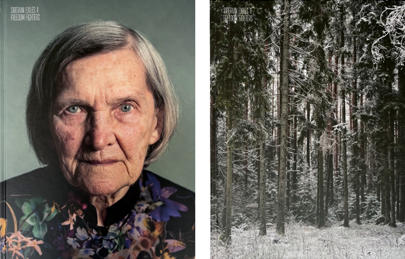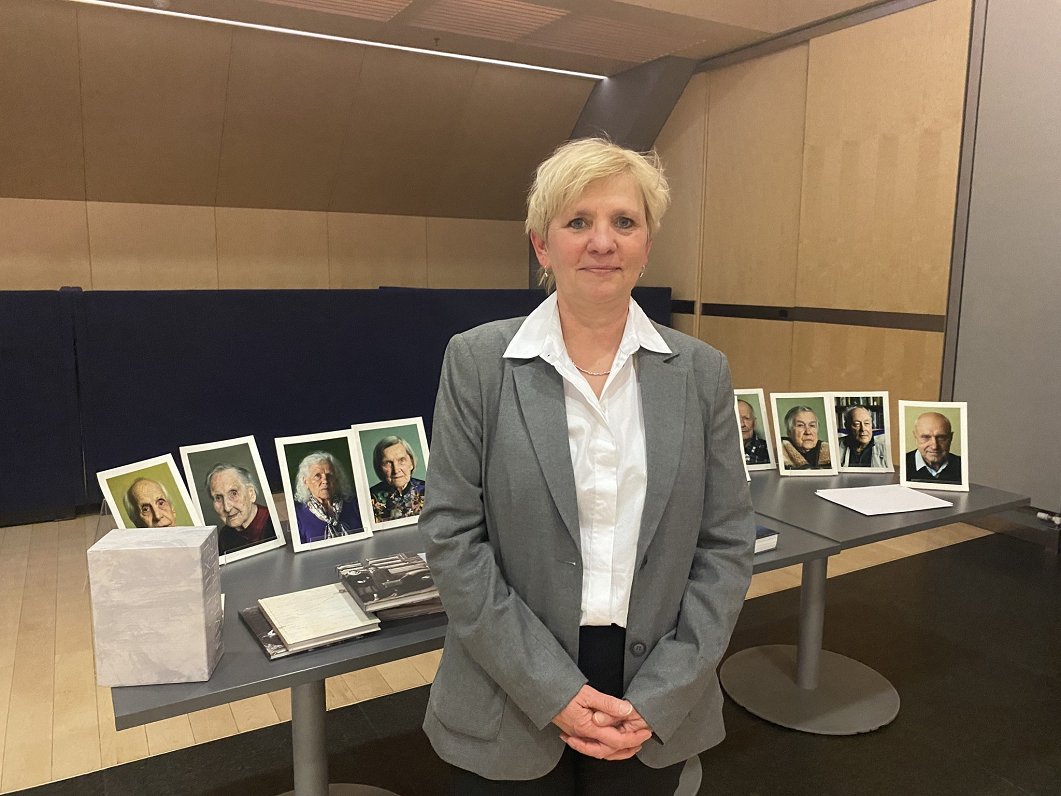As previously reported by LSM, the monumental works tells about a topic that is omnipresent in Estonia, Latvia and Lithuania, but not widely known and under-exposed in Western countries: the mass deportations from the Baltic states to Siberia under the Soviet regime.
LSM had the chance to talk to the Dutch-German author about her long-term documentary project that was already shown also in the Nederlands Fotomuseum in Rotterdam in 2023.
What has motivated you to compile this trilogy?
What has motivated me is that we in the West know far too little about this history. We may have learned a little about Gulag camps in school, but very, very little. But I think that this and the history of the Baltic States should be part of our collective memory. We just do not know enough about it. This is why I have started this project - to share it with a wider audience.
Have you noticed any changes in perception? Has the topic become better known due to your works?
In the Netherlands, definitely. Because the bigger newspapers wrote about it and the exhibition last year at the Nederlands Fotomuseum in Rotterdam was really extremely well attended. And due to the Russian war in Ukraine, I noticed that there is a great need and interest among the public to learn more about the Soviet repressions. So it certainly had an effect – at the least in the Netherlands.

What has been the reaction in the Baltic states?
I have received gratitude and gratefulness that is two-sided. I have been thanked that it is touching and, above all, that someone from the outside is telling the story from here in the West. That is actually the feedback that I hear the most.
Are you horrified that this topic has now become very topical again due to the Russian war in Ukraine?
Of course. In the light of the war, the personal stories of the freedom fighters became even more meaningful to me. During the conversations many pointed out to me that history is currently repeating itself and therefore it was even more important to them that their story is shared with the public.
How easy or difficult was it to talk to the eyewitnesses and record their life stories?
This actually works quite well. In general I am welcomed with open arms. Most of them were happy to talk to me. Sometimes you have to come twice to establish a connection and build up trust. But usually at the end of the first interview the ice is broken. And if I come then for the second time, things go easier and better.
Why have you decided to take a photographic approach for the books?
First and foremost I am a photographer. This is my profession. Writing just happened to come along because I am interested in these topics and have done a lot of research. But I never tell the stories from a narrative role. Everything is really based on oral history – the eyewitnesses themselves tell their story. And I really add very little text, only the most necessary things the reader needs to know to understand the context.
How long did it take to do the intense photo portraits?
This is very different. Sometimes it is done in 10 minutes and sometimes I want to come back three times or even more until you really can say "This is it!“. So that is due to all sorts of circumstances. If the conversation and interview for instance was too emotional or too extensive, then the concentration is gone. But one cannot start with the portrait either. This is not possible because you also need a bit of intimacy before people open up to you on camera.
Do you have the feeling that people open up easier to you and are more willing to talk because you are an outsider?
Definitely. So for me it is very uncomplicated, I am asking everything – even if it is very emotional, very difficult or very personal. But I always tell them: If you do not want to talk about it, if I am asking too much or going into too much details, then please say it. In general, however, I can ask anything which is, of course, for family members often a completely different thing.
Do these often traumatic memories also put a strain on you personally?
No. I can relate to these kinds of stories and deal with them much better than with any superficial stories that do not mean anything to me. Of course, the memories do not leave me unaffected but I also know that I am just passing them on – so they do not stick with me.































